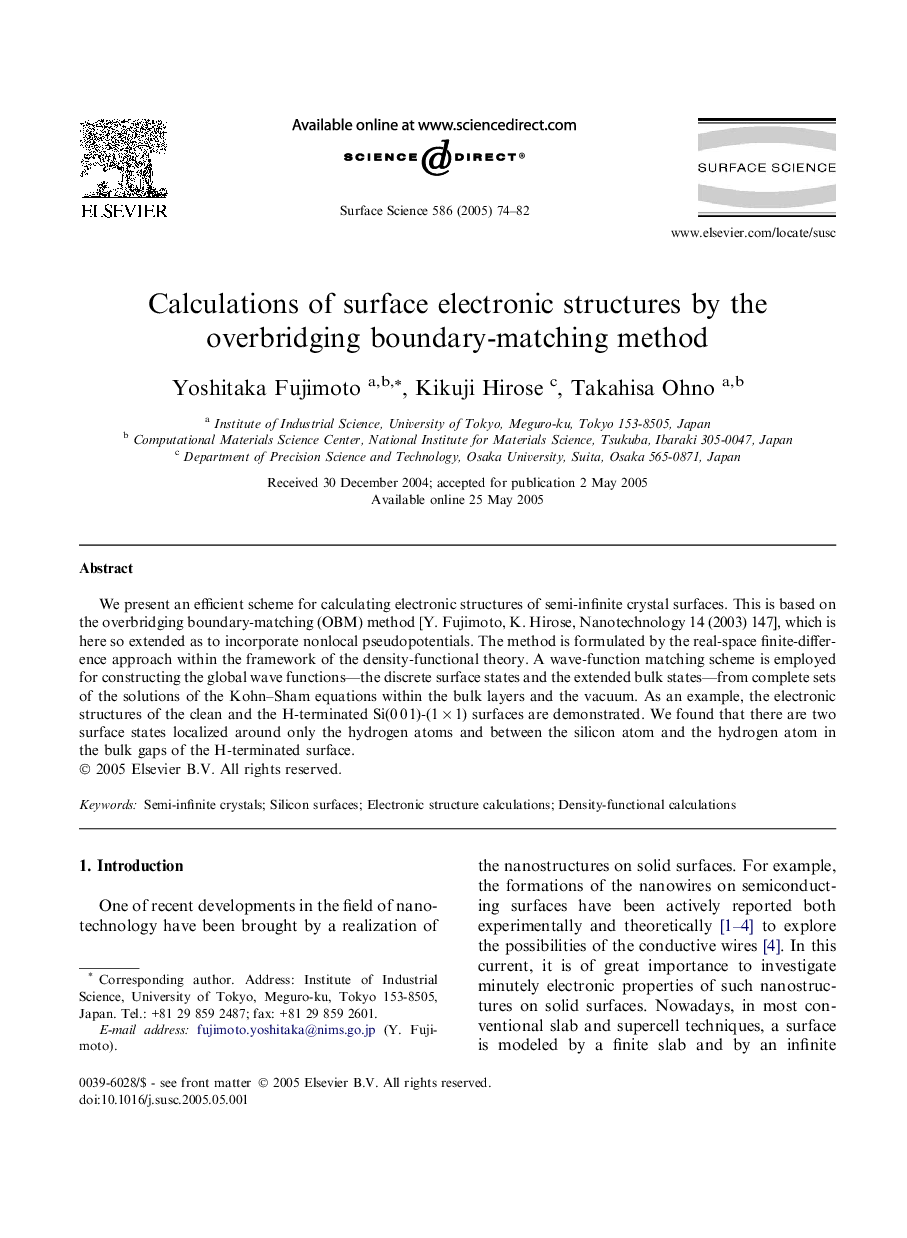| Article ID | Journal | Published Year | Pages | File Type |
|---|---|---|---|---|
| 9595053 | Surface Science | 2005 | 9 Pages |
Abstract
We present an efficient scheme for calculating electronic structures of semi-infinite crystal surfaces. This is based on the overbridging boundary-matching (OBM) method [Y. Fujimoto, K. Hirose, Nanotechnology 14 (2003) 147], which is here so extended as to incorporate nonlocal pseudopotentials. The method is formulated by the real-space finite-difference approach within the framework of the density-functional theory. A wave-function matching scheme is employed for constructing the global wave functions-the discrete surface states and the extended bulk states-from complete sets of the solutions of the Kohn-Sham equations within the bulk layers and the vacuum. As an example, the electronic structures of the clean and the H-terminated Si(0Â 0Â 1)-(1Â ÃÂ 1) surfaces are demonstrated. We found that there are two surface states localized around only the hydrogen atoms and between the silicon atom and the hydrogen atom in the bulk gaps of the H-terminated surface.
Related Topics
Physical Sciences and Engineering
Chemistry
Physical and Theoretical Chemistry
Authors
Yoshitaka Fujimoto, Kikuji Hirose, Takahisa Ohno,
